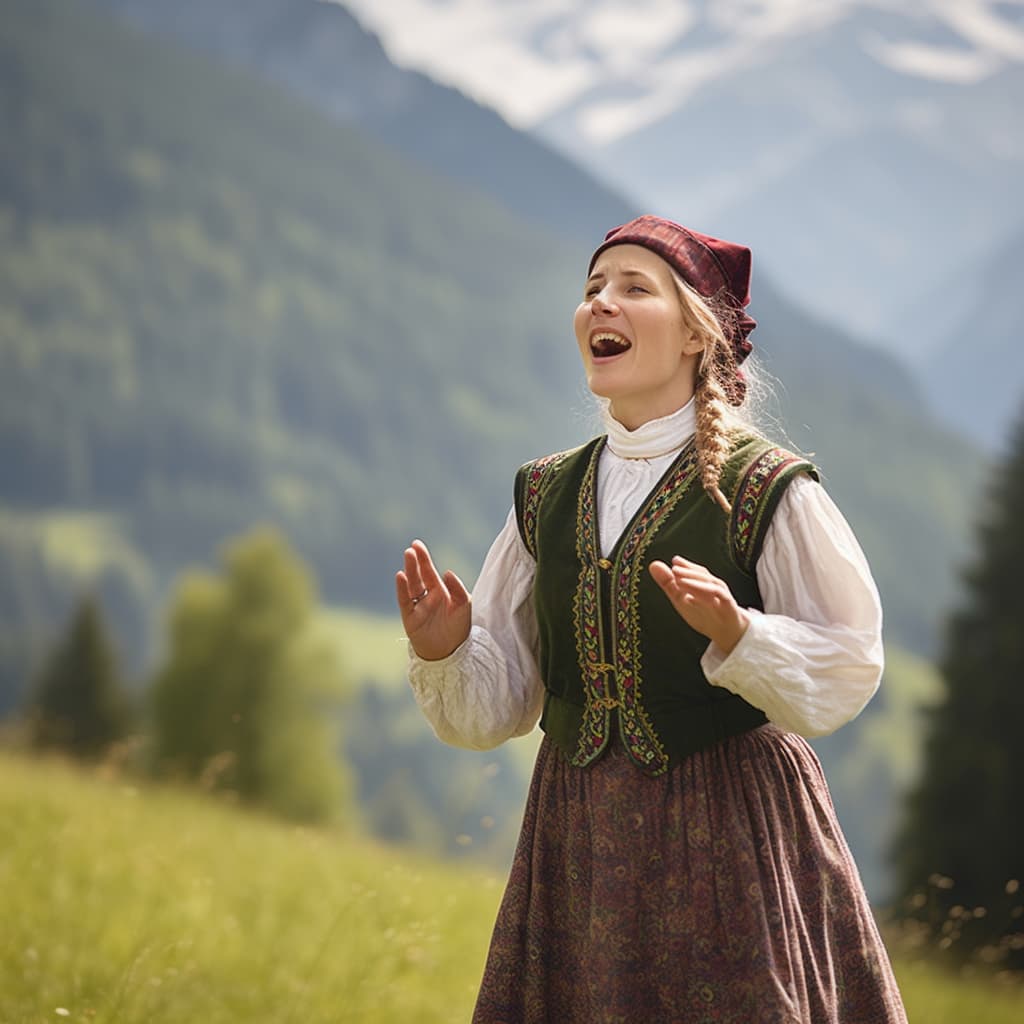AI generated content
This content is generated by an AI and does not reflect the opinions or views of individuals, either living or deceased.
| Text generated by | ChatGPT (GPT-4) |
| Text prompt | Find a little known fact about people from Austria, and write an article about it. |
| Image generated by | Midjourney |
| Image prompt | A woman in Austria, singing outdoors in the mountains, traditional clothing, green grass |
Austria's Hidden Gem: The Art of Gstanzl Singing

Introduction
Austria is renowned for its enchanting landscapes, historical landmarks, and iconic composers like Mozart and Strauss. However, this beautiful country also boasts several lesser-known cultural aspects that remain undiscovered by the wider world. One such captivating and lesser-known fact about Austrians is their practice and appreciation of Gstanzl singing. This article will explore the roots, characteristics, and importance of this traditional Austrian art form.
Origins and History
Gstanzl singing, a unique form of folk music, has its roots in the rural regions of Austria, particularly in Upper Austria, Styria, and Salzburg. This centuries-old tradition is believed to have originated in the late Middle Ages as a form of entertainment for farmers and villagers during social gatherings, such as weddings and festivals. Over time, Gstanzl singing has evolved into a vibrant and distinctive part of Austrian culture, appreciated and practiced by people across the country.
The Art of Gstanzl Singing
Gstanzl singing is characterized by its short, humorous, and often satirical verses, sung in the local dialect. Gstanzl songs typically consist of four lines, which follow a specific rhyming pattern (AABB or ABAB) and a catchy melody. The lyrics of Gstanzl songs usually revolve around everyday life, personal experiences, political commentary, or even impromptu observations.
The art of Gstanzl singing is not only about the lyrics and melody but also about the performance. Gstanzl singers, known as 'Gstanzlsänger,' often engage in spirited battles or 'duels,' where two or more performers take turns singing verses, trying to outwit each other with their clever lyrics and witty humor. These duels can be spontaneous or organized as part of a competition, with singers improvising lyrics on the spot, showcasing their creativity, and quick thinking.
Gstanzl singing is often accompanied by traditional Austrian instruments such as the accordion, zither, or guitar. The music and lyrics are typically passed down through generations orally, making each Gstanzl performance a living testament to Austria's rich folk music heritage.
The Cultural Significance of Gstanzl Singing
The tradition of Gstanzl singing holds great cultural significance in Austria. As a means of preserving local dialects, it serves as a linguistic treasure trove that reflects the country's diverse regional identities. Gstanzl songs also provide a unique insight into the values, concerns, and aspirations of the Austrian people, encapsulating their wit, humor, and love for their homeland.
Moreover, Gstanzl singing represents a way for Austrians to express their emotions and share their stories, fostering a sense of community and shared history. The lively duels between Gstanzlsänger exemplify the spirit of friendly competition and camaraderie that exists within Austrian society.
Conclusion
The little-known fact about the Austrian tradition of Gstanzl singing highlights a vibrant and enduring aspect of the nation's culture. As an art form that celebrates creativity, humor, and community, Gstanzl singing is a testament to the rich folk heritage of Austria. This captivating practice offers a glimpse into the heart of Austrian society, revealing a nation that cherishes its traditions and takes pride in its unique cultural identity.
